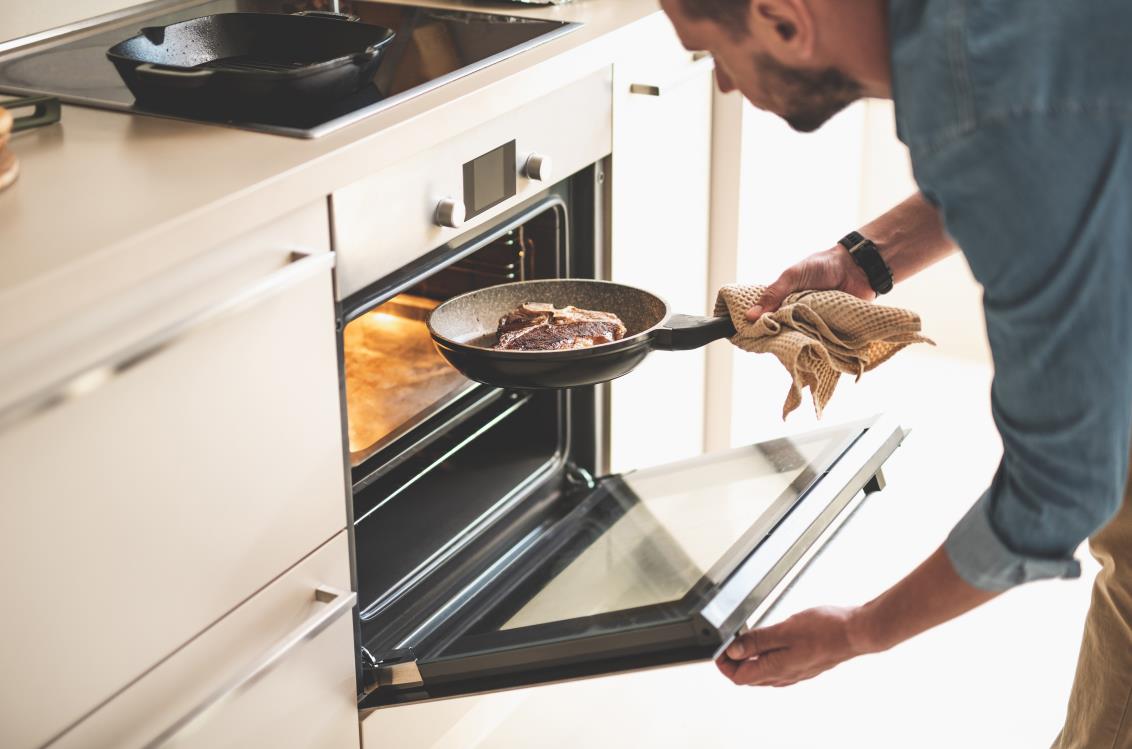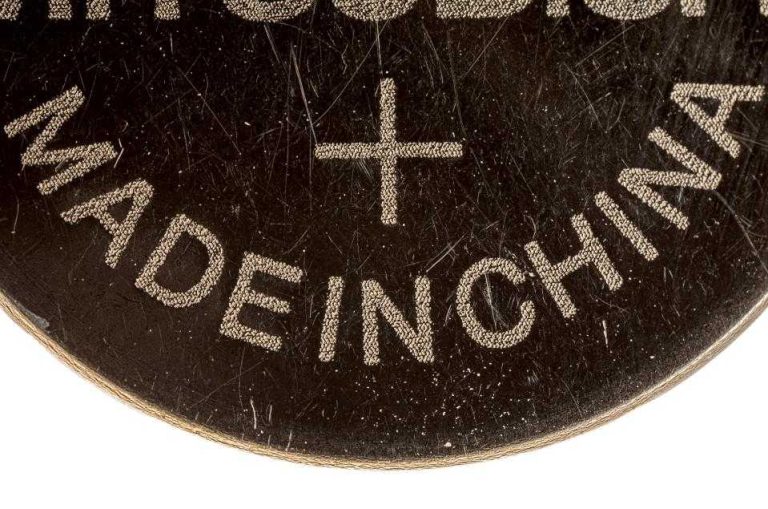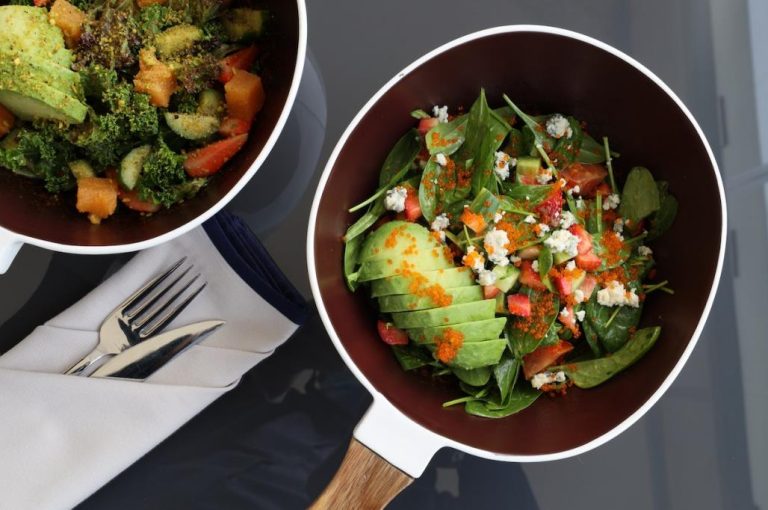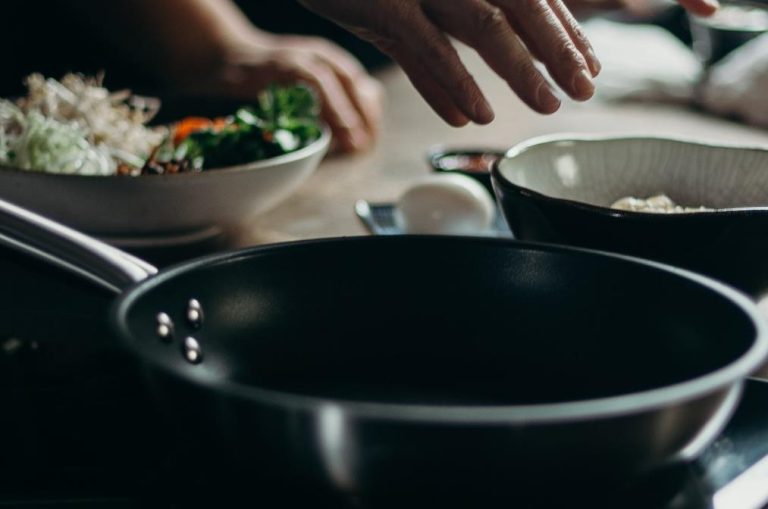Non-stick pans are one of the most convenient pieces of cookware. They don’t stick, reduce the oil required to cook, and cleaning them takes a few scrubs only. The many advantages certainly make them popular among cooks, but one question was often brought up, can non-stick pans go in an oven?
Depending on various factors, a non-stick pan can or cannot be used in the oven. The non-stick coating material and the handle design are what determine it for the most part. So, while you can comfortably use one non-stick pan in the oven, another may pose health and safety concerns.
In this article, we’ll answer if non-stick cookware can go in the oven. Read to the end to know if your non-stick pan is oven-safe.
What is non-stick cookware?
First, let’s describe what non-stick cookware is and the materials involved to understand if they are suitable for oven use.
Non-stick cookware can have various metal bases. This can be aluminum, stainless steel, carbon steel, copper, and a variation of these for multi-layered ones.
What gives these pans and pots non-stick properties is the coating. Most non-stick cookware in the market has either of the following coatings.
- PTFE: Polytetrafluoroethylene is a synthetic, one of the most popular non-stick coating materials in the cookware industry. It’s commonly known as the brand name Teflon by Chemours.
- Ceramic: Although some ceramic cookware is clay-based, non-stick ceramic cookware uses silicon-based coatings that give the cookware a glossy appearance.
- Enamel: The colorful coating synonymous with Dutch ovens, enamel coating is powdered glass fused onto the metal surface using high heat.
These non-stick coating materials have their advantages and disadvantages over the stovetop. Similarly, they vary for use in the oven.
Is it safe to put non-stick pans in the oven?
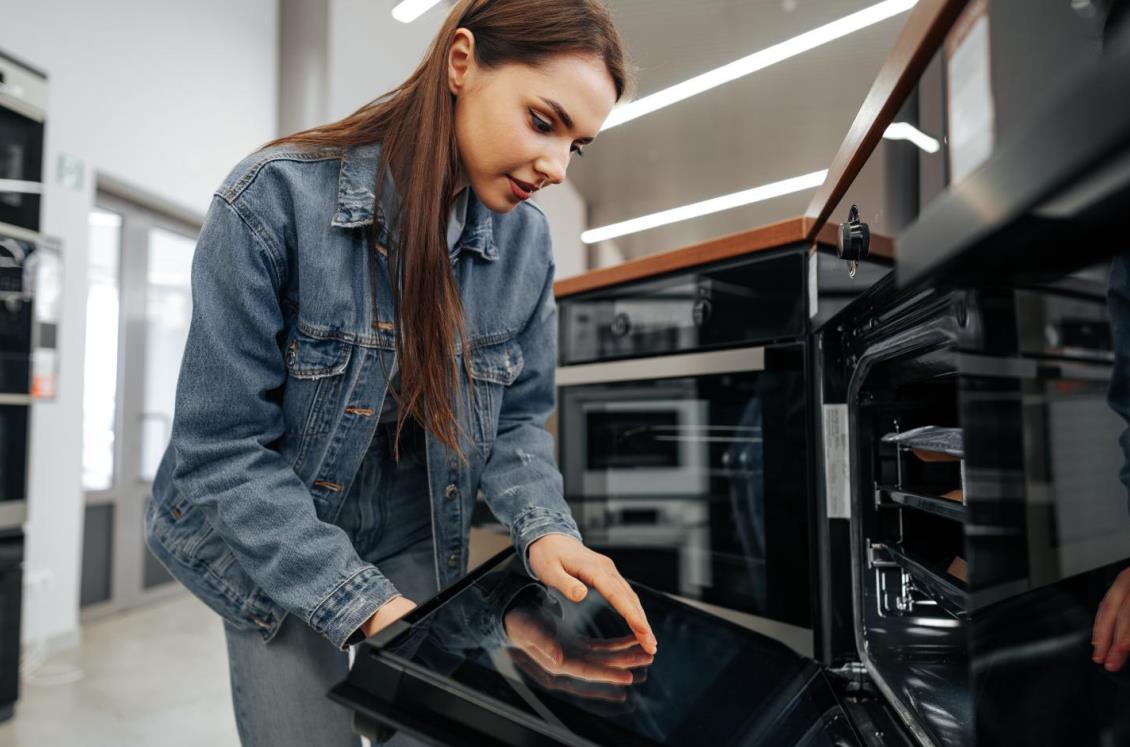
That depends. The metal base can withstand the surrounding high heat from an oven, whether it is copper, aluminum, or stainless steel. The non-stick coatings, on the other hand, may eliminate oven use.
The temperature the non-stick coating can withstand varies. PTFE coating, better known as Teflon, isn’t known to withstand high temperatures, for example.
The maximum temperature you can use a PTFE non-stick pan in the oven is 500ºF (260ºC). When PTFE is subject to temperatures over 500ºF, the coating will begin deteriorating, where the surface can discolor and lose its non-stick properties.
The ones that contain PFOA can also release toxic fumes that can lead to flu-like symptoms. For that reason, always use non-stick pans that are PFOA-free. Luckily, the non-stick cookware manufactured nowadays is free of this hazardous synthetic fluoropolymer.
For pans that use enamel coating, such as enameled cast iron pans, they can safely go in the oven up to 400 to 500ºF, depending on the manufacturer. Ceramic cookware is also similar. Most ceramic cookware that uses silicon coatings can withstand 450 to 500ºF.
The coating material plays the deciding role in oven compatibility. We recommend checking the manufacturer’s guidelines before putting a non-stick pan in the oven.
The manufacturer should state in the packaging whether or not it is safe for baking.
If the manufacturer doesn’t note this, check for the maximum recommended cooking temperature. You can make an informed decision by knowing this and factoring in the handle.
Handle material
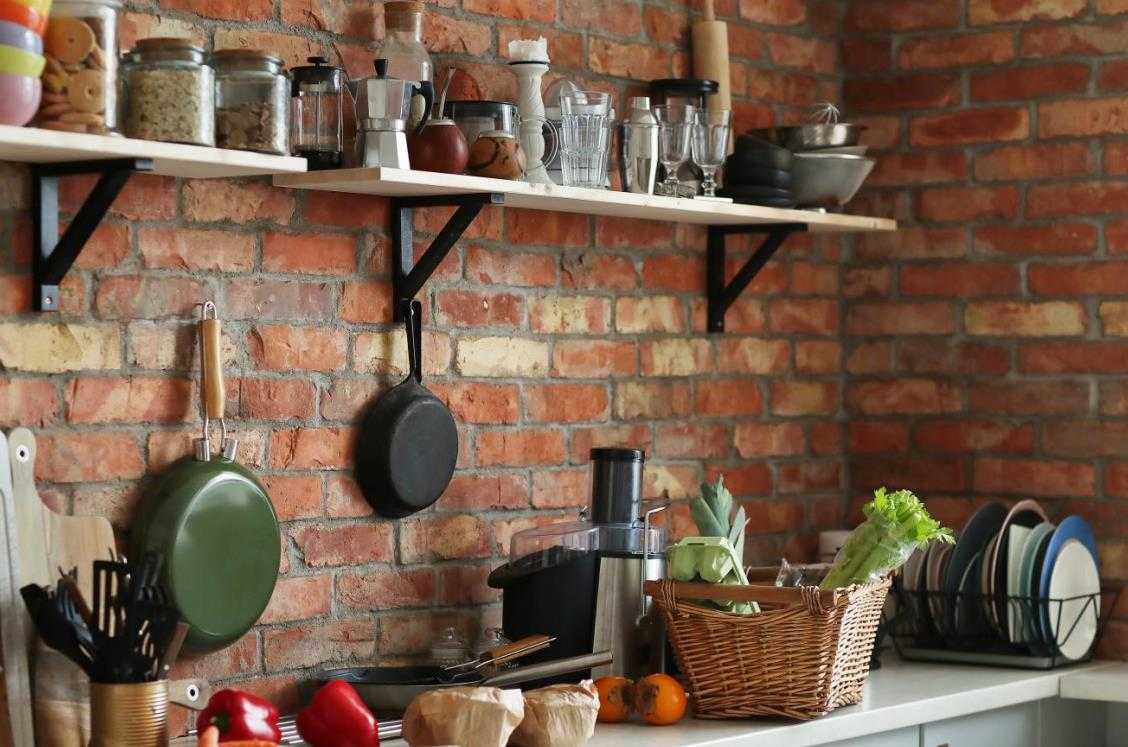
The handle material plays an equally important role. Even if the cooking surface can go in the oven, the handle material may not be appropriate or become a fire hazard. Often, the handle bounds non-stick cookware to the stovetop and restricts it from the oven.
If it’s a non-stick pan with a plastic or wooden handle, it may produce smoke and contaminate the food. Rubber and silicone handles resist high temperatures better. However, it’s usually not to the same degree as the cooking surface itself.
Most rubber and silicone handles start to discolor around 400 to 450ºF. Although this doesn’t impose a safety or health risk, it’s worth noting to maintain the appearance of non-stick cookware. When choosing between rubber and plastic handles, choose rubber as it resists high heat much better.
This brings us to the most appropriate handle material for oven use – metal. It can be stainless steel, copper – anything. Metal handles won’t degrade like others do when subject to high temperatures.
There are also non-stick pans with detachable handles. These are perfect for oven use if the pan can withstand high temperatures. Besides, they will take up less space, allowing big pans to fit in small ovens.
Tips to use non-stick pans safely
If your non-stick pan can go in the oven safely, that’s great! Still, pay attention to a few things to keep yourself and the food safe.
- Never exceed the maximum temperature outlined in the packaging. This can make the pan lose its non-stick properties and become useless after just a few uses.
- If the recipe allows it, preheat the non-stick pan gradually, ensuring that it doesn’t come up to temperature too quickly.
- Avoid heating the non-stick cookware in the oven empty. If you’re cooking something in an oven bag, for example, place the food and pan in the oven together.
- Always use an oven mitt or gloves to handle the hot pan in the oven. Make sure to use one that’s thick enough to insulate your hand. Also, avoid using damp oven mitts as they can cause scald burns.
- The same as on the stovetop, utilize soft utensils, like wooden or silicone spatulas, to stir. Using metal utensils can scratch the non-stick coating and expose the metal surface beneath.
- After using it in the oven, give the non-stick cookware some time to cool. Washing it right after or submerging it in the water can cause it to warp and damage the non-stick coating. This suggestion is critical, especially for enameled cast iron and ceramic pans.
What about broilers?
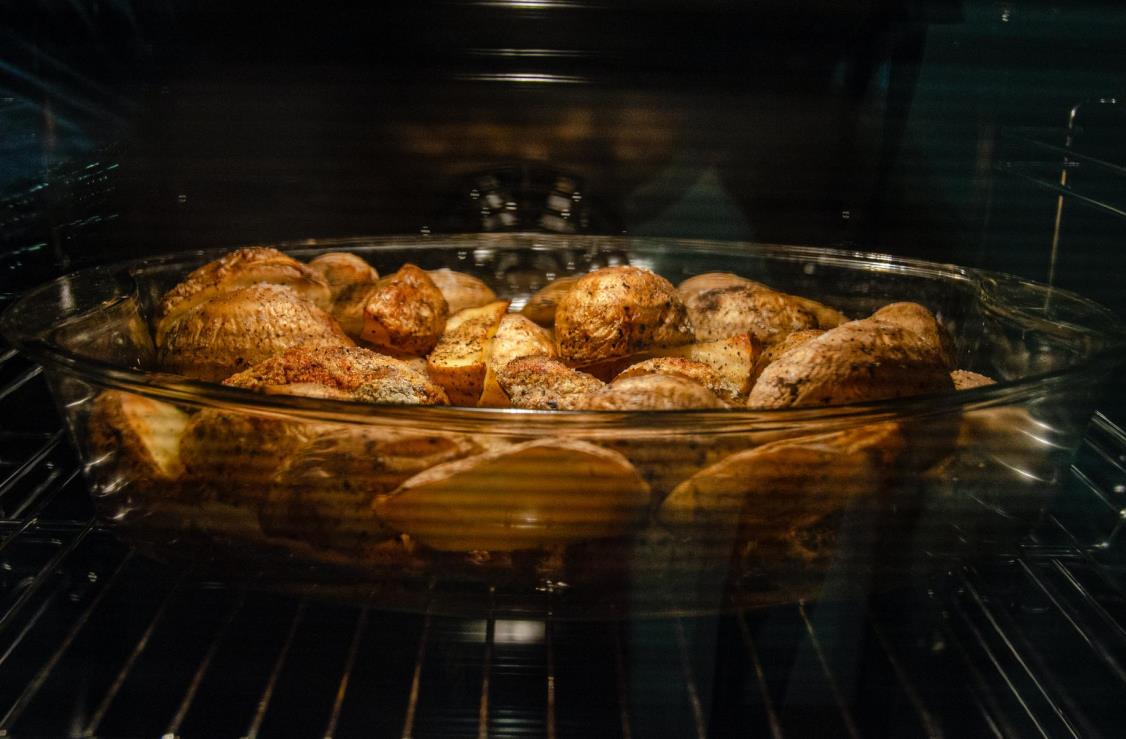
After a close assessment that your beloved non-stick pan is safe to go in the oven, you might be tempted to use them under the broiler as well. While non-stick can be oven-safe, broilers are a different discussion.
Let alone the high temperature a broiler can reach (up to 600ºF), the non-stick coating doesn’t do well under direct flame. If the manufacturer doesn’t explicitly state that the non-stick cookware or bakeware is broiler safe, it isn’t a good idea to use it for broiling.
While some broilers have different temperature settings, the non-stick cookware can get damaged even at the lowest option. Avoid using non-stick cookware for broiling unless it is otherwise stated safe by the manufacturer.
Conclusion
Non-stick cookware is convenient and easy to use. They can have the famous PTFE (Teflon) coating or use enamel or ceramic. It’s up to the consumer to decide which is better for their cooking style and preferences.
Within the safe temperature limits, non-stick pans can go in the oven. That’s, of course, assuming the handle is also appropriate for oven use. This type of cookware can assist cooks in preparing tasty dishes in the oven and reduce the oil required for cooking.
Source cookware from LeeKnives
We are a leading knife and knife accessories manufacturer in Yangjiang City, China. Our network of business associates can connect with cookware manufacturers with high-quality products, low MOQs, and fair prices. Contact us with your inquiries to get a free quote.
